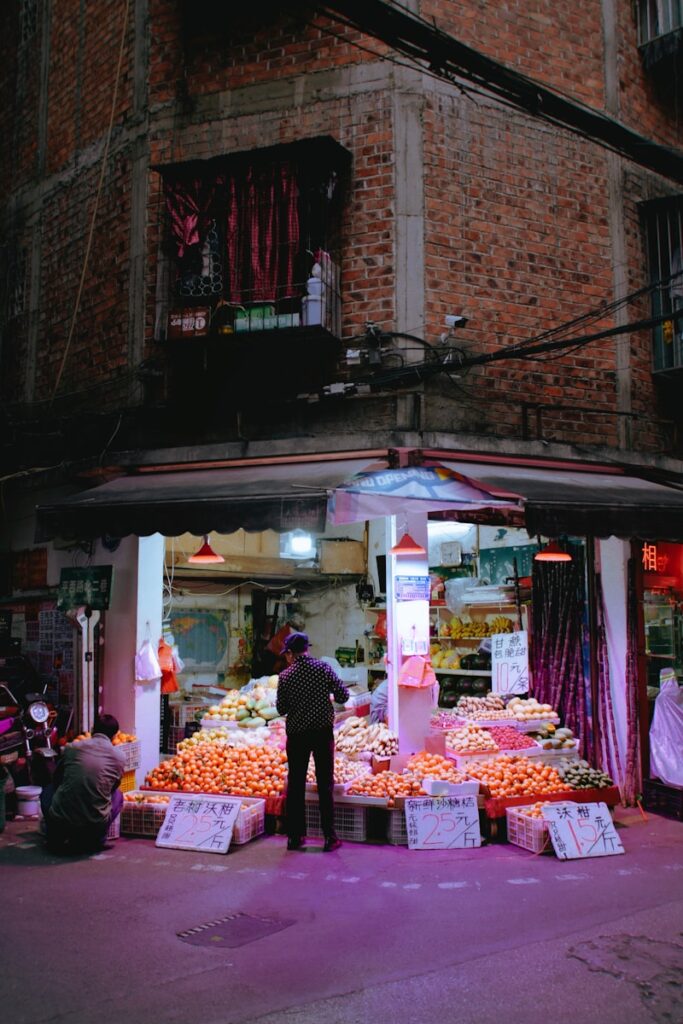
In the vibrant tapestry of Spanish commerce, one name resonates with an almost mythical ubiquity: Mercadona. It’s the supermarket chain that has transformed the everyday act of grocery shopping into a cultural touchstone, a retail giant whose distinctive yellow and blue insignia is as familiar as the Spanish sun. But beyond the bustling aisles and the perfectly stocked shelves lies a story far richer and more complex than meets the eye, a narrative woven with ambition, innovation, and an unwavering drive to redefine retail.
Like an unsealed archive or a long-lost reel of footage, we are poised to embark on an in-depth investigative journey, peeling back the layers of this fascinating enterprise. Our mission is to go beyond the glossy corporate reports and the mundane shopping experience, to unearth the hidden mechanisms, the pivotal decisions, and the enduring philosophies that have forged Mercadona into the formidable entity it is today. This is not just a story of market dominance; it’s a compelling saga of a family’s vision, a company’s evolution, and a nation’s changing consumer landscape.
Prepare to explore the unseen depths of Mercadona, to understand the strategic genius and the occasional controversies that have shaped its trajectory. From its humble butcher shop beginnings to its towering presence in the Iberian Peninsula, we will reveal the pivotal moments, the unique strategies, and the compelling personalities that have made Mercadona a true retail phenomenon. Join us as we shine a spotlight on the untold chapters of this supermarket empire.
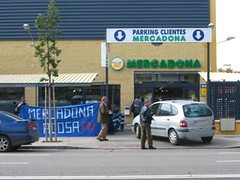
1. **The Enigmatic Origins of Mercadona: From Butchery to Retail Behemoth**The story of Mercadona, a name now synonymous with Spanish household staples, traces its roots back to 1977, emerging from within the Cárnicas Roig group. This initial venture, founded by Francisco Roig Ballester and his wife Trinidad Alfonso Mocholi, was not conceived as a retail empire but rather with the straightforward objective of expanding meat commercialization and venturing into the nascent grocery business. It was a humble beginning for what would become an industry titan.
This early context is crucial, painting a picture of Mercadona as a family enterprise born from a traditional trade. It was a time of aspiration and growth, a period when the founders sought to diversify and innovate within the burgeoning Spanish market. The move from a specialized meat business to a broader grocery offering marked the first step in a transformative journey that would fundamentally reshape the Spanish retail sector.
Even the very name, Mercadona, carries a fascinating dual origin story. According to Juan Roig, one of the founders’ sons and the company’s future leader, the name was inspired by an Italian pasta brand, ‘Mercadonna,’ with a slight modification. Yet, other sources suggest a more romantic and locally rooted derivation, linking it to the Valencian phrase ‘mercat de dona,’ meaning ‘women’s market.’ This linguistic duality reflects the blend of international inspiration and deep local connection that would come to define Mercadona’s brand identity.
Regardless of its exact etymological source, the name came to represent a burgeoning vision. From its modest origins, Mercadona was set on a path of relentless innovation and expansion, far exceeding the initial dreams of its founders. It was a journey from a regional butchery’s diversification to a supermarket chain that would eventually permeate every corner of Spain, evolving into the retail powerhouse we recognize today.
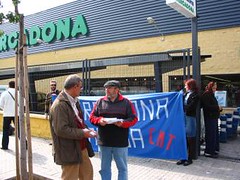
2. **Juan Roig’s Visionary Leadership and the Family Dynasty**The trajectory of Mercadona took a decisive turn in 1981 when Juan Roig Alfonso, the son of the founders, acquired the company from his parents. At this pivotal moment, Mercadona consisted of just eight small grocery stores scattered across Valencia. This acquisition, undertaken with the steadfast support of his wife, Hortensia María Herrero Chacón, and his siblings Francisco, Amparo, and Trinidad, marked the beginning of a new era of strategic growth and transformative leadership.
Juan Roig’s vision was not merely to expand the existing business but to fundamentally reinvent it. His entrepreneurial spirit, coupled with a keen understanding of market dynamics, laid the groundwork for Mercadona’s future success. The early 1990s cemented this family-led consolidation, with Juan Roig and Hortensia securing the majority of the company’s shares in 1990, firmly establishing the Roig family’s control and strategic direction.
Today, Mercadona remains predominantly a family-owned enterprise, a testament to the enduring influence of its founding lineage. The Roig family holds a significant 89% stake, with the Gómez family retaining 7%. This tight-knit ownership structure is mirrored in the company’s corporate governance, where key family members occupy prominent positions on the administrative board. Juan Roig Alfonso presides as chairman, with his wife, Hortensia María Herrero Chacón, serving as vice president.
The board further includes Juan Roig’s brother, Fernando Roig Alfonso, and Rafael Gómez Gómez. Crucially, the next generation is also deeply embedded, with all four of Juan and Hortensia’s daughters – Hortensia, Amparo, Juana, and Carolina Roig Herrero – serving as board members, with Carolina also holding the position of board secretary. This robust family involvement ensures a continuity of vision and a strong, unified strategic direction that has been a hallmark of Mercadona’s impressive growth and sustained market leadership.
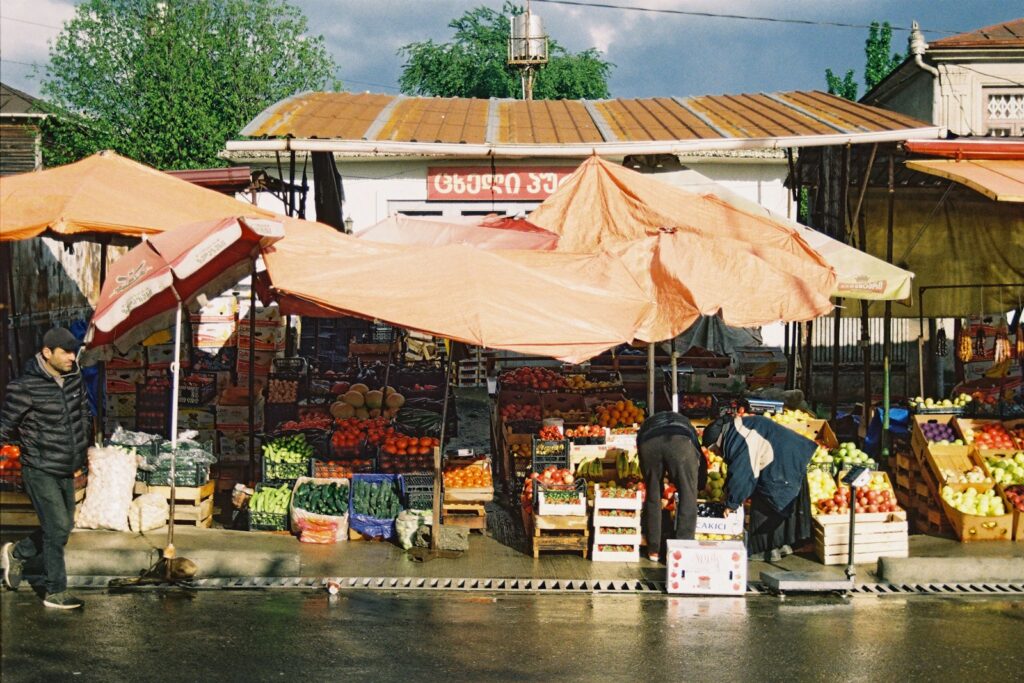
3. **The “Siempre Precios Bajos” (SPB) and Total Quality Management (GCT) Revolution**The early 1990s presented a critical juncture for Mercadona, where initial attempts at price reduction and advertising campaigns fell short of expectations. This period of re-evaluation led to a revolutionary shift in strategy, culminating in the formal implementation of the “Siempre Precios Bajos” (SPB), or “Always Low Prices,” model in 1993. This wasn’t merely a pricing tactic; it was a fundamental philosophical pivot designed to instill unwavering consumer trust.
At its core, the SPB strategy sought to provide consistently low prices for products without any compromise on quality. It was a bold move away from the traditional retail model of sporadic sales and promotional “hook offers” (ofertas gancho). Mercadona famously eliminated extensive advertising, betting instead that consumers would perceive the consistent value proposition as more reliable and trustworthy. The message was clear: you would always find fair prices, regardless of when you shopped.
This pricing innovation was inextricably linked to Mercadona’s “Gestión de Calidad Total” (GCT), or “Total Quality Management,” model. The GCT placed the customer, or “el jefe” (the boss), at the absolute center of every decision. This customer-centric approach permeated all aspects of the business, from product development to store operations, ensuring that quality and satisfaction were paramount, complementing the promise of affordability.
The synergy between SPB and GCT created a powerful market differentiator. Instead of engaging in often costly and unpredictable price wars or fleeting promotional cycles, Mercadona focused on a long-term strategy of value and trust. This strategic repositioning was a masterful move that not only distinguished the company from its competitors but also laid a robust foundation for its exponential growth in the decades that followed, proving that consistency and quality, delivered at a fair price, could be a recipe for unprecedented success.

4. **The Unstoppable Rise of Mercadona’s Own Brands: Hacendado, Deliplus, Bosque Verde, and Compy**
Central to Mercadona’s “Siempre Precios Bajos” (SPB) strategy was an ingenious approach to product sourcing and branding: the development of its own private labels through a network of “interproveedores.” Rather than solely relying on negotiations with established national brands for long-term contracts, Mercadona forged deep, collaborative relationships with dozens of companies specifically tasked with producing goods under its proprietary labels. This model allowed for stringent quality control and cost efficiency, directly benefiting the consumer with consistently affordable products.
The year 1996 marked a pivotal moment with the official launch of Mercadona’s now-iconic private brands. Hacendado became the standard-bearer for food products, rapidly gaining consumer loyalty for its quality and value. For cosmetics and personal care, Deliplus emerged, transforming the drugstore aisle. Household cleaning and general drugstore items found their home under Bosque Verde, while pets were catered for by Compy, a brand dedicated to animal products.
These brands weren’t just generic alternatives; they became household names, often outperforming or matching the quality perception of national brands at more competitive prices. The strategy proved remarkably successful, with Mercadona becoming the leading distribution chain in Spain for private label products. An impressive 46.5% of all products sold in Mercadona are private label, and close to 60% of the products offered across its aisles proudly bear one of its own brand names.
This deep integration of private labels is a direct manifestation of Mercadona’s SPB strategy, allowing the company to exert greater control over the entire production chain. It ensures that the promise of low prices and high quality is not just a marketing slogan but an inherent part of the business model. The success of Hacendado, Deliplus, Bosque Verde, and Compy stands as a powerful testament to Mercadona’s ability to innovate, adapt, and ultimately, captivate the Spanish consumer base with its unique brand proposition.
5. **Mercadona’s Aggressive Expansion Strategy: A History of Strategic Acquisitions**Mercadona’s journey from a handful of Valencian grocery stores to a national retail powerhouse was meticulously orchestrated through a series of strategic acquisitions and alliances, particularly during a period when the Spanish sector faced increasing pressure from French capital. This aggressive expansion strategy allowed Mercadona to quickly consolidate its presence and establish a formidable footprint across the country.
In 1988, a significant move saw Mercadona acquire 22 Superette supermarkets in Valencia, instantly boosting its regional presence. The following year, the company set its sights on the capital, entering the Madrid market through the acquisition of Cesta Distribución and Desarrollo de Centros Comerciales. These early maneuvers demonstrated a clear intent to become a dominant national player, not just a regional success story.
The expansion continued with purpose throughout the 1990s. In 1991, Mercadona absorbed Supermercados Dinos and Super Aguilar, further broadening its geographical reach. By 1998, it cemented its presence in Catalonia with the acquisition of the chains Almacens Paquer, Superama, and Supermercats Vilaró. Alongside acquisitions, strategic alliances were also key, such as the 1997 partnership with Almacenes Gómez Serrano, which facilitated Mercadona’s entry into the Andalusian market.
This relentless concentration of market share, while putting Mercadona in a challenging position at times and attracting lucrative offers for purchase, was ultimately a testament to Juan Roig’s conviction. He steadfastly refused to sell, instead opting to explore and implement new management models that would sustain the company’s growth. This period of dynamic expansion through M&A and strategic partnerships was instrumental in carving out Mercadona’s undisputed position as Spain’s leading supermarket chain, proving that bold moves, when underpinned by a clear vision, can lead to unparalleled success.
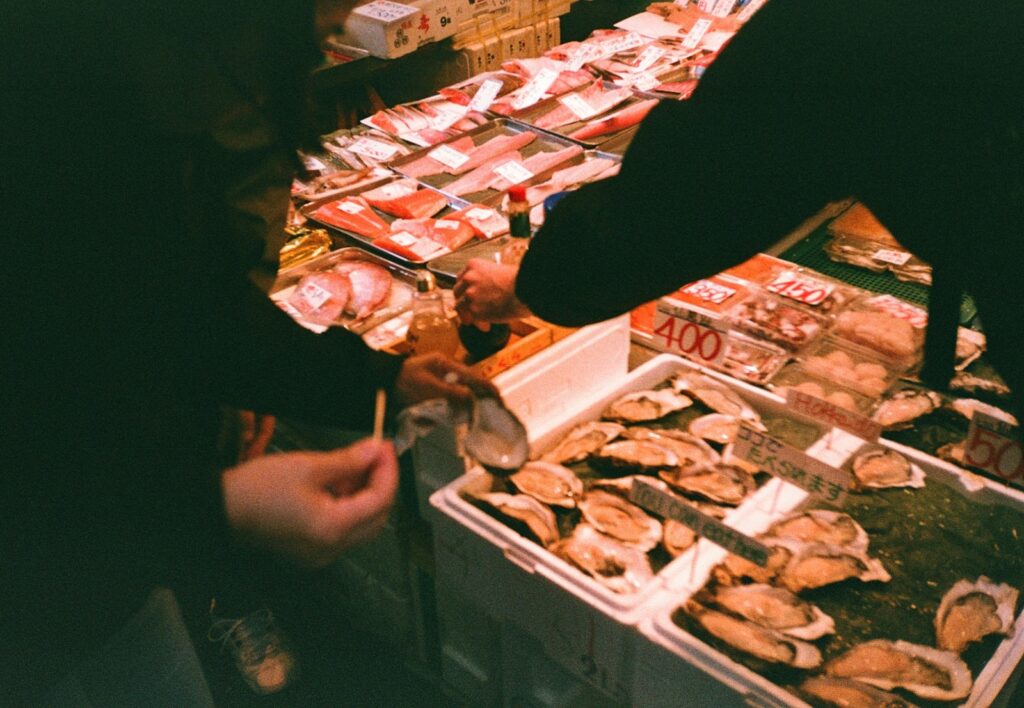
6. **The Leap Across the Border: Mercadona’s Bold International Foray into Portugal**Having firmly established its dominance within Spain, Mercadona embarked on its most ambitious venture yet: international expansion. In 2019, the retail giant made its inaugural leap across the Iberian border, opening its first supermarket in Portugal. This move signaled a new era for the company, venturing into a market with similar cultural nuances but distinct competitive landscapes.
The initial foray into Portugal was not a tentative step but a calculated and substantial investment. Mercadona’s plans were robust, with a commitment to open another ten stores in Portugal the following year. The long-term vision is even more ambitious, with projections to establish up to 150 supermarkets in the neighboring Iberian country, indicating a profound belief in the Portuguese market’s potential for growth and profitability.
To facilitate this significant internationalization process, Mercadona allocated substantial financial resources. Between 2016 and 2018, the company invested an impressive 160 million euros specifically for its cross-border expansion. This was followed by an estimated additional investment of 100 million euros during 2019 alone, underscoring the scale and strategic importance of its Portuguese venture.
By 2022, Mercadona had already cemented a notable presence in Portugal, boasting 39 operational supermarkets. This expansion represents more than just geographical growth; it signifies Mercadona’s readiness to test its unique business model, honed over decades in Spain, in new territories. The success of this internationalization will undoubtedly be a key indicator of the company’s future trajectory, demonstrating its adaptability and resilience beyond its home market.

7. **A Model of Employee Dedication: High Wages, Profit Sharing, and Indefinite Contracts**At the heart of Mercadona’s operational success and distinctive corporate culture lies its approach to human capital, a strategy championed by Juan Roig that intertwines competitive compensation with high productivity. As of 2022, Mercadona boasted a substantial workforce of 99,000 employees, with the vast majority, 95,500, based in Spain, and 3,500 dedicated to its burgeoning Portuguese operations. This considerable workforce is managed under a unique philosophy.
One of the most remarkable aspects of Mercadona’s employment policy is its commitment to job security. The company proudly maintains that practically all of its contracts are indefinite, providing a level of stability that is increasingly rare in the contemporary retail sector. This commitment to permanent employment fosters loyalty and experience within the workforce, contributing to the consistent quality of service that customers have come to expect.
Beyond job security, Mercadona stands out for its remuneration practices. According to a 2014 study by Infoempresa.com, the average salary at Mercadona was 24,122 euros, positioning it as the third-highest paying among 16 evaluated companies in the sector. This commitment to good wages is not merely an expense but is viewed as an investment, directly linked to Juan Roig’s core strategy of combining “buenos salarios y una alta productividad” – good salaries and high productivity.
Further reinforcing its employee-centric model, Mercadona also operates a significant profit-sharing scheme. The company consistently distributes a portion of its annual profits among its workers in the form of a bonus, or ‘prima.’ In 2018, this commitment translated into a substantial 325 million euros distributed among its dedicated staff. This direct sharing of success not only motivates employees but also aligns their interests with the company’s overall performance, creating a powerful incentive for collective achievement and solidifying Mercadona’s reputation as a company that values its people.
Having carved out an indelible mark on the Spanish retail landscape, Mercadona now faces the dynamic complexities of maintaining its dominance while navigating a world increasingly scrutinizing corporate practices. The journey from innovative disruptor to established leader invariably brings with it a fresh set of challenges, controversies, and the constant need for adaptation. This section pulls back the curtain on Mercadona’s contemporary narrative, delving into the colossal undertakings of modernization, the intricate dance of its corporate structure and supplier relationships, and the significant criticisms that have emerged from labor practices to cutting-edge ethical dilemmas.
Prepare to explore the less-publicized aspects of this retail colossus, as we uncover the strategic pivots and the social pressures that continue to shape its trajectory. Like an investigative spotlight sweeping across a complex scene, we will illuminate the controversies that test its formidable reputation, from the whispers of worker discontent to the undeniable shifts in consumer expectation and regulatory oversight. This is where the narrative truly deepens, revealing the multifaceted reality of a supermarket giant operating under an intense and unforgiving gaze.
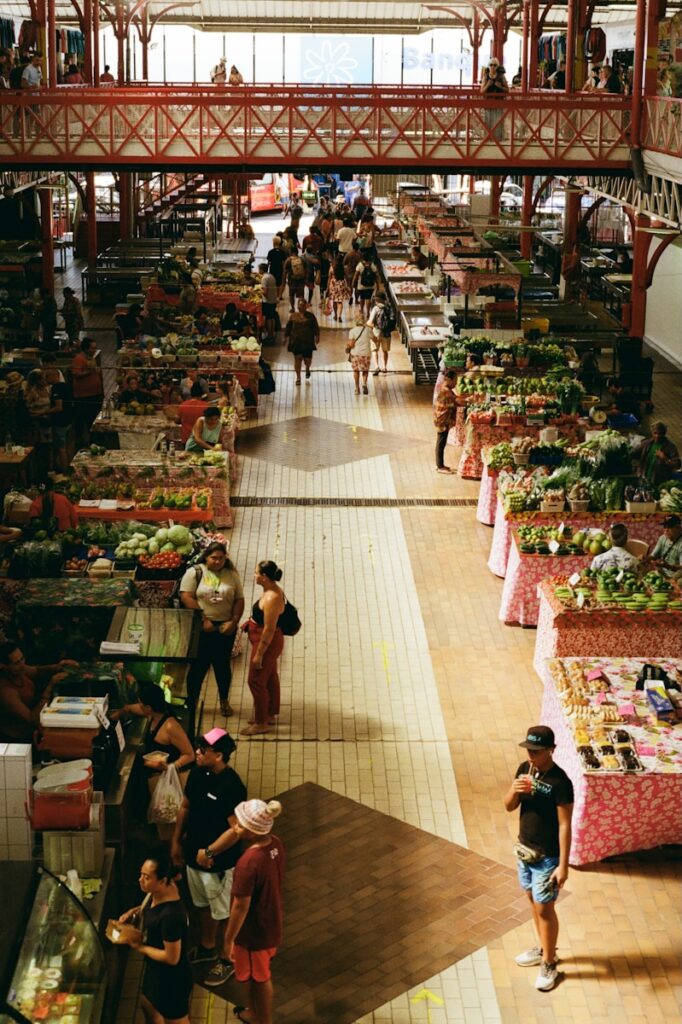
8. **Monumental Store Modernizations and the Vision for the Future**Amidst its rapid growth and market saturation, Mercadona has undertaken a colossal task: a complete overhaul of its vast network of supermarkets. This isn’t merely a cosmetic facelift but a strategic reinvestment aimed at optimizing the shopping experience, enhancing sustainability, and cementing its appeal in an ever-evolving retail environment. From 2017 to 2022, the company embarked on an integral remodeling of all its establishments, integrating criteria for sustainability and energy efficiency.
These modernizations extend beyond aesthetics, focusing on a better distribution of space to improve customer flow and product accessibility. A key emphasis has been placed on fresh products, with notable innovations such as the introduction of orange squeezing machines directly within the stores. This commitment to fresh produce and a more inviting atmosphere reflects a nuanced understanding of contemporary consumer desires, moving beyond purely price-driven appeal to a more holistic value proposition.
The scale of this ambition is truly staggering. For the period of 2019-2023, Mercadona earmarked an investment exceeding 10,000 million euros. These funds were not only allocated for store reforms and new openings but also for the critical modernization of its logistics, the digital transformation of the entire company, the expansion of its online sales platform, and, of course, the ongoing establishment of its operations in Portugal. It’s a testament to a company relentlessly pursuing efficiency and innovation across every facet of its business.
This strategic investment underlines Mercadona’s forward-thinking approach, recognizing that continued market leadership demands not just consistent performance but also a proactive engagement with environmental responsibility and technological advancement. The transformation of its physical spaces and digital infrastructure is a powerful declaration of intent, signaling a company preparing itself for the challenges and opportunities of the decades to come. It’s a retail empire not content to rest on its laurels but constantly seeking to refine and redefine the supermarket experience.
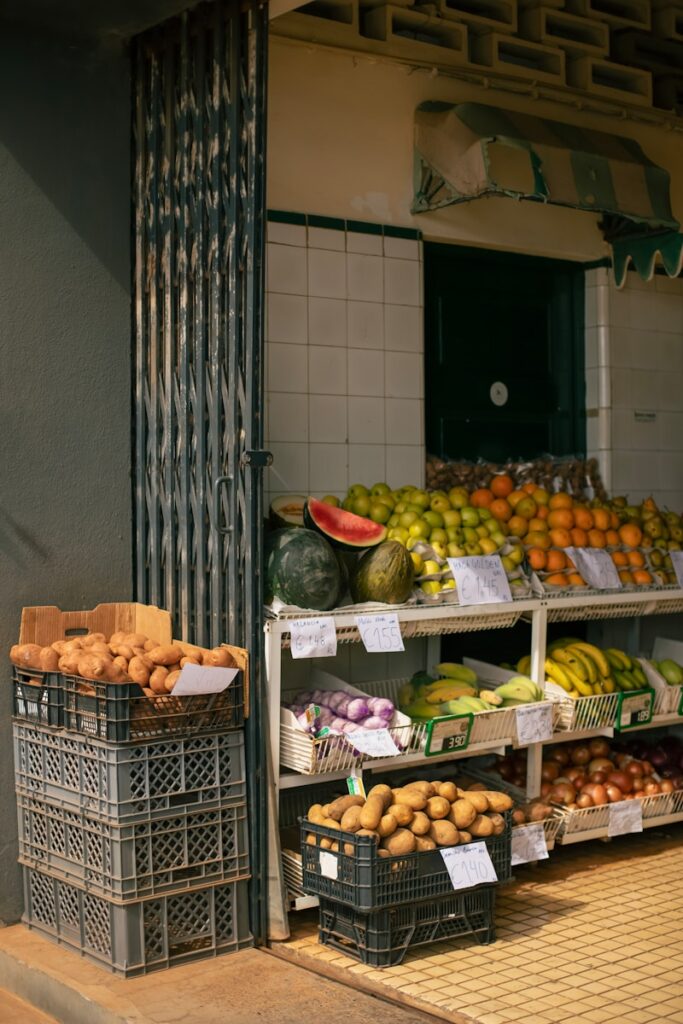
9. **The Intricate ‘Interproveedor’ Model Under Scrutiny**While Mercadona’s “interproveedor” model has been lauded as a cornerstone of its “Siempre Precios Bajos” strategy, enabling stringent quality control and cost efficiency, it has not been without its critics. This unique system, where dozens of companies are tasked with exclusively producing goods for Mercadona’s private labels, has drawn attention and, at times, considerable controversy. The very success of Mercadona’s own brands—accounting for an impressive 46.5% of total products sold—highlights the immense power the company wields over its manufacturing partners.
Critics, including some suppliers and even governmental mentions, have voiced concerns regarding the preeminence of Mercadona’s private brands over a broader variety of other commercial brands. This perceived limitation in choice can create a challenging environment for smaller, independent brands attempting to secure shelf space or compete against the retail giant’s vertically integrated offerings. It raises questions about market diversity and the potential for a concentrated market to limit consumer options.
Furthermore, complaints from interproveedores themselves have surfaced, alleging pressures that limit their freedom of action. Some claim Mercadona seeks to control the entire production chain, from sourcing raw materials to manufacturing, potentially reducing the autonomy of these partner companies. There have also been accusations that Mercadona may transfer distribution costs to interproveedores if sales expectations are not met, creating an imbalance in the financial burden and risk within the partnership.
These criticisms underscore the complex dynamics inherent in such a highly integrated supplier model. While beneficial for ensuring consistent quality and price for Mercadona’s customers, the power asymmetry can lead to tensions and accusations of undue influence. It’s a delicate balance between collaborative partnership and corporate control, a tightrope Mercadona continuously walks as it manages its vast network of dedicated producers.

10. **Vertical Integration and the Roig Family’s Investment Vehicles**Beyond the direct relationships with interproveedores, Mercadona’s corporate structure and the Roig family’s broader investment strategies reveal an even deeper layer of vertical integration. Accusations of vertical concentration have been made, suggesting a concerted effort to control various stages of the supply chain and exert influence over its numerous partners. This strategy is partly manifested through the establishment of capital risk societies by the Roig family.
Entities such as Angels Capital and Atitlán Alpha Capital, created by the Roig family, are reported to intervene preferentially in the relationships with Mercadona’s interproveedores. These investment vehicles provide a mechanism for the family to hold stakes or offer financing to companies within Mercadona’s supply ecosystem, further solidifying control and aligning interests. This interwoven web of ownership and investment reinforces the company’s ability to dictate terms and shape the market.
This intricate financial architecture goes beyond typical retail-supplier agreements, pointing to a strategic vision that seeks to internalize as much of the value chain as possible. By investing in and influencing its production partners, Mercadona effectively creates a closed loop, ensuring consistency, reducing external dependencies, and optimizing costs from raw material to retail shelf. It’s a powerful, albeit sometimes controversial, model of corporate synergy and control.
The involvement of these family-owned capital risk firms raises questions about competition and market dynamics, as they can prioritize investments that serve Mercadona’s strategic objectives. This financial consolidation provides Mercadona with a robust, self-reinforcing ecosystem, enabling its formidable market position but also attracting scrutiny regarding fair competition and the autonomy of its partners. It is a bold, almost audacious, approach to securing a competitive advantage in a fiercely contested sector.
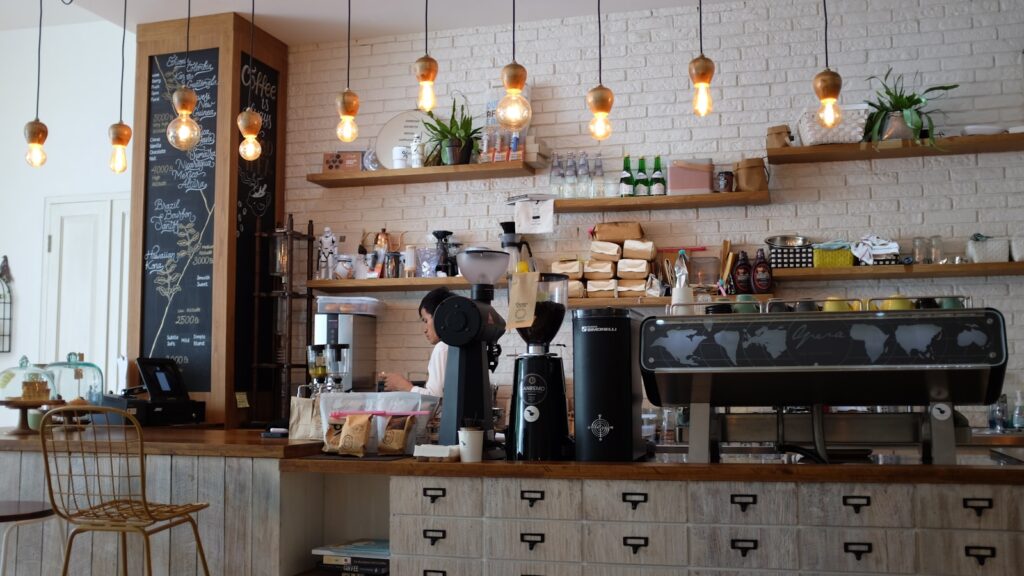
11. **Persistent Labor Disputes and the CNT Conflict**Despite Mercadona’s celebrated employee policies—high wages, indefinite contracts, and profit-sharing—the company has faced significant challenges and criticisms regarding its labor practices. The most prominent of these is a long-standing labor dispute with the CNT (Confederación Nacional del Trabajo) trade union, a conflict that has been open since 2004 and brought to light by the company’s own employees. This ongoing tension paints a more complex picture of Mercadona’s internal world.
Cases of workplace harassment, particularly against female employees, have led to firm court rulings, making their way into media reports and online discussions. These highly publicized incidents cast a shadow on the company’s otherwise positive image as an employer. Allegations have also included violations of workers’ rights concerning maternity and childcare, specifically regarding the right to breastfeeding leave.
Critics argue that Mercadona’s policy of unifying breastfeeding leave into a single month, rather than allowing the statutory distribution of one hour per day over nine months, limits employees’ legal and potestative right to choose their leave period. While presented by the company as a social benefit, this approach has been interpreted by some as a restriction rather than an enhancement of employee rights. Furthermore, accusations of Mercadona subjecting its workers to annual conduct examinations have also surfaced, raising concerns about surveillance and control over employees.
The labor unrest reached a critical point with a collective of Mercadona workers in San Sadurní de Noya, Barcelona, who initiated the longest indefinite strike in Catalonia’s history from March 2006 to April 2007, lasting thirteen months. These actions and ongoing grievances, with new complaints of harassment and mistreatment still being filed, underscore a persistent conflict that challenges Mercadona’s narrative of exceptional employee dedication. It serves as a stark reminder that even a highly successful, employee-centric company can face significant internal opposition.
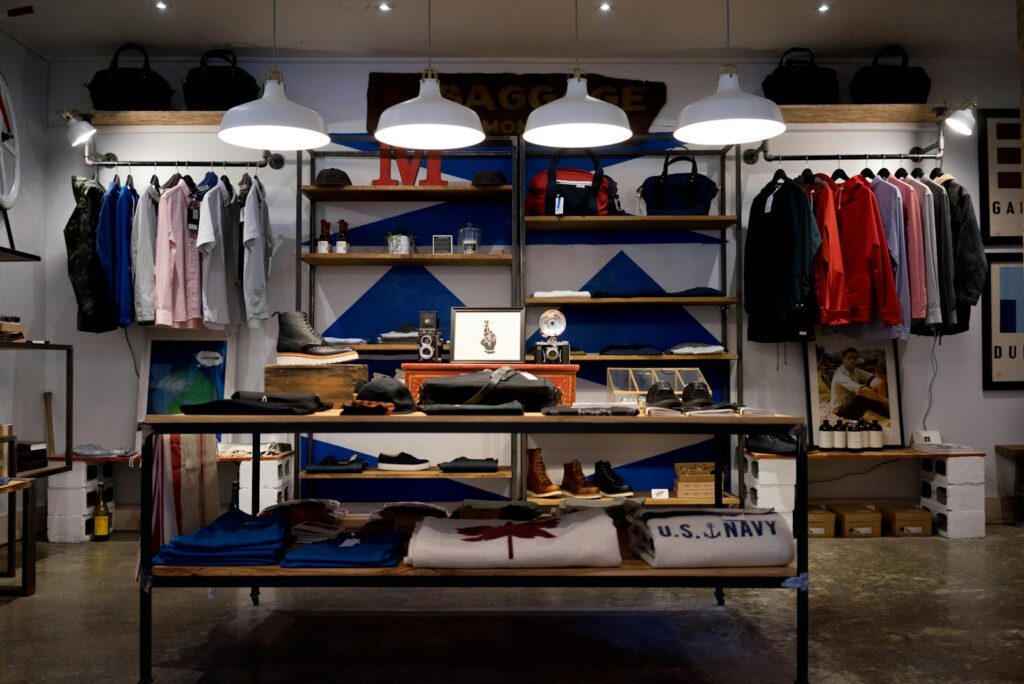
12. **The Mandate of Employee Polivalencia and Image Control**One frequently voiced criticism of Mercadona’s internal policies centers on its insistence on employee “polivalencia,” or versatility. Workers are expected to be capable of performing a multitude of tasks across the supermarket at any given moment, rather than specializing in a particular role. While this approach fosters flexibility and responsiveness within store operations, it has been critiqued for potentially hindering individual professional development.
The argument is that this constant rotation and demand for adaptability may limit an employee’s ability to master a specific craft or accumulate specialized skills, thereby narrowing their career growth opportunities primarily to within Mercadona itself. It’s a trade-off between operational efficiency for the company and individual professional trajectory, a dynamic that can lead to internal dissatisfaction among those seeking more defined career paths.
Beyond job roles, Mercadona has also faced scrutiny for its strict regulations regarding employee image, which critics argue are tied to gender stereotypes. The company reportedly requires male employees to be clean-shaven and have short hair, while female employees are expected to wear “some color” of makeup, without being “made up like a door.” Visible piercings are prohibited for all staff, reflecting a broader corporate emphasis on a uniform and somewhat traditional aesthetic.
These image mandates, while aiming to project a consistent brand identity, have been perceived by some as overly controlling and restrictive. They raise questions about personal expression in the workplace and the extent to which a company can dictate the appearance of its staff. It’s a delicate balance between maintaining a professional image and respecting individual autonomy, a line Mercadona navigates with firm, prescriptive guidelines that have occasionally sparked controversy.

13. **Ethical Criticisms: From Food Banks to Facial Recognition and Racism Allegations**Mercadona’s journey has not been without broader ethical challenges that extend beyond internal labor practices, touching on its social responsibility and technological implementations. In 2012, a significant controversy emerged when the investigative program *Salvados* on La Sexta revealed that Mercadona was not collaborating with food banks. This revelation sparked public outcry, prompting the company to swiftly rectify its stance.
Following this public scrutiny, Mercadona formalized an agreement with the Banco de Alimentos, committing to regular donations, and has since continued its collaboration with the institution. This incident highlighted the power of public opinion and media scrutiny in shaping corporate social responsibility, demonstrating Mercadona’s capacity to adapt its practices in response to external pressure and societal expectations.
More recently, in 2021, Mercadona faced a substantial legal penalty, being condemned to pay a fine of two and a half million euros. This fine was levied for implementing facial recognition technology on its customers in forty-eight establishments. The use of such technology, intended for security purposes, raised significant privacy concerns and led to a landmark ruling that underscored the stringent regulations governing data protection and biometric data usage in Spain.
Furthermore, the company has faced accusations of racism. Brazilian footballer Ludmila da Silva posted a video on social media, claiming she was consistently followed by security guards whenever she entered a Mercadona supermarket. Despite the video gaining widespread media attention, Mercadona reportedly stated that it had not been made aware of the specific incidents, leaving the allegations unanswered and sparking further debate about implicit bias and customer treatment within its stores.

14. **The Shadowy World of Alleged Covert Advertising**In a digital age where the lines between news and promotion can blur, Mercadona has also found itself embroiled in controversies surrounding alleged covert advertising practices. The company has been accused of sending press releases to media outlets with the intention of having them published as news, thereby subtly promoting its brand and products without explicit disclosure. This practice, if proven, represents a significant ethical dilemma for journalism and consumer trust.
A notable incident occurred in the summer of 2024, when Mercadona reportedly sent an “urgent communiqué” to numerous Spanish media outlets. These outlets, in turn, published the message as literal, unverified news, which appeared to be a promotion for a price reduction on a specific product. This event ignited a public debate about the potential confusion created for consumers who might struggle to distinguish between genuine news reports and corporate advertising disguised as editorial content.
The Spanish self-regulation advertising association, Autocontrol, has previously issued rulings classifying certain informational pieces published in the media as “covert advertising” by Mercadona, citing a violation of norm 13. These dictums suggest a pattern of behavior where the company’s communication with the press crosses the ethical boundary into promotional material, without the necessary transparency. It’s a practice that leverages the credibility of news organizations to advance commercial interests, potentially undermining public confidence in both media and brand.
This intricate dance between public relations and disguised promotion highlights the sophisticated and sometimes shadowy tactics employed in modern corporate communication. For Mercadona, a company that famously eschewed traditional advertising for years, these allegations of covert marketing represent a significant ethical challenge, raising questions about transparency, integrity, and the enduring power of subtle influence in the media landscape. The revelations serve as a compelling reminder that even the most dominant players must navigate a complex ethical terrain, where public perception is meticulously, and sometimes controversially, shaped.
Read more about: Tens of Thousands of Epstein Emails Unearthed: A Deep Dive into the Architect of a Shadow Network
As our in-depth journey into Mercadona’s world concludes, we are left with a portrait far more intricate than the bustling aisles suggest. From its visionary origins and revolutionary business models to its bold expansions and formidable market dominance, Mercadona is undeniably a retail phenomenon. Yet, like any empire, its foundations are not without complexities, its successes not without their shadows. The controversies surrounding its interproveedor relationships, persistent labor disputes, ethical dilemmas from facial recognition to alleged racism, and the subtle art of covert advertising all paint a picture of a company constantly evolving under an intense and ever-watchful gaze. Mercadona stands as a testament to the power of a clear vision, relentless innovation, and an unwavering focus on the customer, but also as a compelling case study in the multifaceted challenges of sustaining leadership in a world that increasingly demands transparency, accountability, and a holistic commitment to societal well-being. It is a story still being written, one that will undoubtedly continue to captivate and challenge our understanding of modern commerce.

